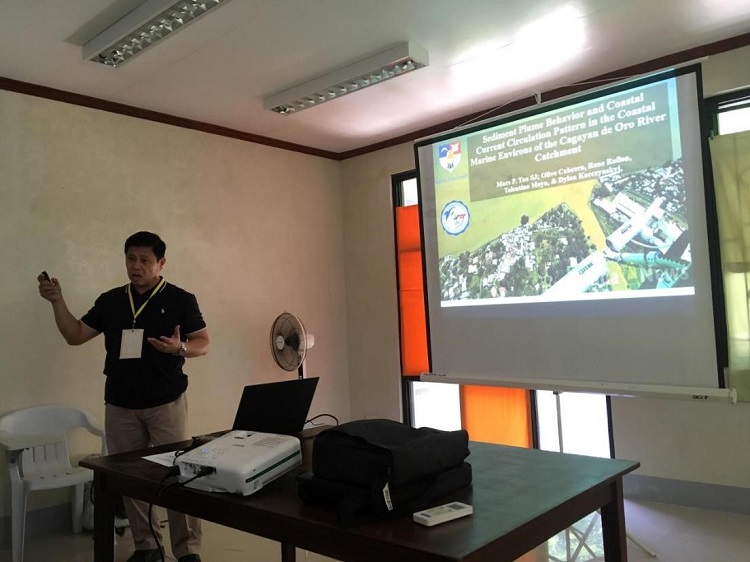
ENVIRONMENT SCIENTIST. Fr Mars P Tan SJ, director of XU McKeough Marine Center, presents his research at the 15th National Symposium on Marine Science. Supplied photo.
AKLAN, Philippines — A research paper titled “Sediment Plume Behaviour and Coastal Current Circulation Patterns in the Coastal Marine Environment of the Cagayan de Oro River Catchment” was presented by Fr Mars P Tan SJ, director of XU McKeough Marine Center, at the 15th National Symposium on Marine Science held at the Aklan State University.
The research revealed the behavior of river-borne sediment plume as it reached the coastal water and based on the surface current circulation in the bay within the vicinity of the Cagayan de Oro river mouth.
To calculate the sediment plume movement and the coastal circulation pattern during certain months, the study employed the Delft 3D modelling tool.
The model used information such as wind speed and direction, tidal action, river velocity, water discharge, and suspended sediment concentration to calculate the movement, direction, and reach of the sediments in the coastal water.
To qualify the varying effects of bay-forcing factors, three categories based mainly from the suspended sediment concentration and the water discharge rate were made: zero sediment and low water discharge, average sediment concentration and average water discharge, and extreme sediment concentration and very high water discharge.
The resulting effects of the modeling showed that the largest amount of sediments was deposited near the mouth of the CDO river and the dispersed plume generally moved southeastwardly in the bay.
The 15th National Symposium on Marine Science was organized by the Philippine Association of Marine Science and Aklan State University, with support from the Aklan provincial government, DENR-UNDP SMARTSeas PH Project, Oceana, DA-BFAR National Fisheries Research and Development Institute, and other environmental organizations of the country.∎